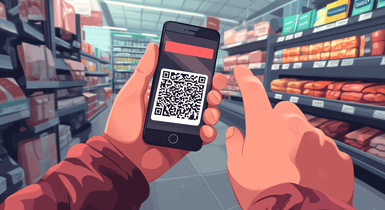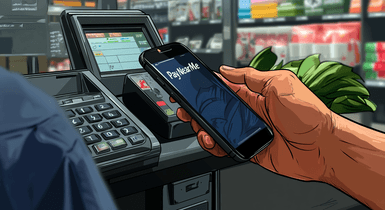5 Best Payment Methods for Shopify

Black Friday, holiday gift-giving season, or just a weekend splurge—good shopping can take many forms. And what could be better than doing all of it in an online shop, like Shopify, from the comfort of your own home?
To build customer trust and get good transaction speed, any good online store should integrate several payment options in its checkout process. Luckily, Shopify has quite a few. This article outlines five popular Shopify payment methods to help you find the best fit for your business.
Criteria for Choosing Payment Methods

Whether you're starting a new business on Shopify or optimizing an existing one, a payment solution is among the first things you should decide on. However, with a wide array of options available, selecting the right one can be challenging. To make a well-informed decision, it's crucial to keep in mind several specific criteria.
Here are some essential factors to consider when browsing through Shopify-accepted payment methods:
Transaction fees
Transaction fees from Shopify payment providers can significantly impact your profit margins and pricing. Evaluating the per-transaction rate along with any additional fees is the best thing one can do when managing their budget. Analyze annual, statement, settlement, chargeback, anticipation, and cancellation fees. By evaluating all these factors, you will understand the total cost of the option you pick.
Security features
Make sure your chosen payment method complies with eCommerce security standards, such as the Payment Card Industry Data Security Standard (PCI DSS). Avoiding fraud has never been more essential, so use only reliable, risk-free tools. You can also check the fraud detection features offered by your payment provider.
Ease of integration
This criterion refers to how easily a gateway can be incorporated into your existing system. Those that are easy to integrate, enable businesses to set up payment processing quickly and cost-effectively. Easy-to-integrate services also tend to come with less technical issues and are easier to update and maintain. Some payment methods have a test mode to see how your customers will interact with it and check if the experience is good enough.
Customer location
The geographical location of your target market plays a significant role in determining which payment methods to offer. For instance, European customers may prefer options like PayPal, Klarna, or Apple Pay, while Chinese consumers often expect WeChat Pay and Alipay. It's essential that the provider is reputable and trusted within the region where you're selling.
Payment method history
Regularly check your payment history to determine which payment method is best for Shopify in your case. If you find that customers primarily use a limited number of gateways, consider narrowing your options to just those. This will streamline the checkout page and reduce maintenance costs.
Top Payment Methods for Shopify

Let’s explore some of the best payment methods for Shopify so you can choose for yourself:
Shopify Payments
Shopify Payments tops the list as the ‘native’ solution provided by the platform itself. It offers a full set of features to manage payments on your store without setting up external services. This built-in gateway supports a wide range of payment options and includes tools to help identify and prevent fraudulent transactions.
When using Shopify Payments, merchants avoid the additional transaction fees applied by third-party services. However, the platform still charges some fees depending on your Shopify subscription plan. A per-transaction fee varies from 2.4% to 2.9% (higher plans offering lower rates) + 30 cents per transaction; while a conversion fee is 1.5% in the US and 2% in all other countries and regions.
PayPal
As one of the most well-known Shopify payment providers, PayPal is recognized and trusted worldwide. It supports multiple payment methods and as many as 25 currencies, operating in over 200 countries. PayPal is easy to set up, as Shopify provides a built-in integration tool. The service also has customer protection against unauthorized and fraudulent transactions.
PayPal fees vary based on location, payment type, and currency. In the US, it typically charges 3.4% + $0.30 per transaction, while international sales generally incur a cross-border fee. Currency conversion fees are 4.5%.
Stripe
Stripe is another popular option for merchants seeking a flexible and customizable solution. It supports various payment methods and multiple currencies. However, it’s not as widely available as PayPal—Stripe currently operates only in 46 countries.
As for Stripe’s fees, they vary based on location and payment type. In the US, it charges 2.9% + $0.30 per successful card charge. For international cards, there’s an additional 1.5 % fee. A 1% fee is charged for currency conversion if you accept payments in multiple currencies.
Amazon Pay
Amazon Pay is another popular gateway for Shopify store owners. It is known for streamlining the checkout process by letting customers use their pre-selected payment and shipping data. This way, they can make purchases with just a few clicks, saving a lot of time on things like inputting card details.
Amazon Pay supports multiple currencies, has built-in fraud protection features, and charges no monthly fees. Transaction fees start at 2.9% + $0.30 per transaction for US domestic sales, with higher fees for cross-border operations.
Square
Square is a good choice for businesses with both online and in-person retail presence. It offers a comprehensive POS system that integrates with your online shop, allowing you to manage sales, inventory, and customer data in one place.
As for online store benefits, Square provides a user-friendly setup, built-in analytics, and customer engagement tools. It supports a variety of payment methods, doesn't have monthly fees for the basic processing services, and charges 2.9% + $0.30 transaction fee.
Note that Shopify may charge an extra fee if you use the gateways mentioned above, as these are third-party services.
Additional Payment Methods to Consider

It is also worth discussing some alternative options to make sure you choose the best payment method for Shopify:
Apple Pay
Apple Pay is one of the available mobile wallet options for Shopify. It allows users to make purchases quickly using their Apple devices and benefit from advanced security measures like tokenization and biometric authentication. This fast and user-friendly payment method integrates seamlessly with Shopify, which means it’s quite easy to set up.
Google Pay
Google Pay is another good solution for attracting customers who prefer mobile payment services to more traditional credit card, debit card, or bank account payments. With this service, your users won’t need to manually enter card or shipping information, and, as with Apple Pay, will enjoy advanced security features.
Cryptocurrency
Cryptocurrency has risen to become a popular method to pay for goods because of comparatively low fees and no international transfer charges. You can accept payment on your Shopify store using crypto through services such as Crypto.com or BitPay. However, some regions still have limitations and bans on the use of crypto, so ensure it is accepted in your area.
Final Thoughts
Payments are a critical component of any e-commerce business, as choosing the right method can greatly enhance customer satisfaction and drive sales. Therefore, understanding what payment methods does Shopify accept and which is best for your business is essential for your company’s growth.
With so many Shopify payment options available, it's important to consider transaction fees, plans and prices, ease of integration, and trustworthiness. Multiple gateways allow businesses to cater to diverse customer preferences and habits, enhancing the shopping experience for your target audience.
Develop the right payment strategy, activate the corresponding services, and you’ll be able to reach success even in the modern competitive market.




